Luna 25 mission ends
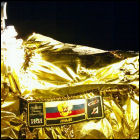 Russia’s Luna 25 mission to the lunar south pole ends unsuccessfully when an engine burn intended to lower the vehicle’s orbit around the moon into its final landing orbit goes awry. Luna 25 instead crashes into the moon as the result of the engine firing longer than expected. Contact with Luna 25 is not recovered following what the Russian space agency describes as an “abnormal situation”. The mission was Russia’s first attempt at a lunar landing in nearly 50 years.
Russia’s Luna 25 mission to the lunar south pole ends unsuccessfully when an engine burn intended to lower the vehicle’s orbit around the moon into its final landing orbit goes awry. Luna 25 instead crashes into the moon as the result of the engine firing longer than expected. Contact with Luna 25 is not recovered following what the Russian space agency describes as an “abnormal situation”. The mission was Russia’s first attempt at a lunar landing in nearly 50 years.
Luna 25
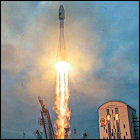 Russia launches the Luna 25 uncrewed spacecraft on a mission to land near the south pole of the moon. This is the first mission in the Luna program, which has been dormant since the 1970s; if successful, the mission will be the first Russian soft-landing on the moon in almost 50 years. Much like India’s Chanrayaan-3 mission, launched a few weeks earlier, Luna 25 is intended to search for signs of water in the shaded areas of the lunar south pole, which could be a necessary resource for future crewed missions and possible long-term habitation of the moon.
Russia launches the Luna 25 uncrewed spacecraft on a mission to land near the south pole of the moon. This is the first mission in the Luna program, which has been dormant since the 1970s; if successful, the mission will be the first Russian soft-landing on the moon in almost 50 years. Much like India’s Chanrayaan-3 mission, launched a few weeks earlier, Luna 25 is intended to search for signs of water in the shaded areas of the lunar south pole, which could be a necessary resource for future crewed missions and possible long-term habitation of the moon.
Luna 24: the last lunar lander
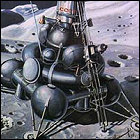 The Soviet Union launches the robotic lunar lander and sample return mission, Luna 24. Touching down safely in the Mare Crisium region two weeks after its launch, Luna 24 drills a two-meter core sample of lunar soil for return to Earth in a small reentry capsule. Luna 24 is the final Soviet mission to the moon, and is the last vehicle from Earth to land on the moon in the 20th century. NASA and the Soviet space agency exchange samples of lunar soil later in 1976, since Luna 24 landed in a region unexplored by the Apollo manned landing missions.
The Soviet Union launches the robotic lunar lander and sample return mission, Luna 24. Touching down safely in the Mare Crisium region two weeks after its launch, Luna 24 drills a two-meter core sample of lunar soil for return to Earth in a small reentry capsule. Luna 24 is the final Soviet mission to the moon, and is the last vehicle from Earth to land on the moon in the 20th century. NASA and the Soviet space agency exchange samples of lunar soil later in 1976, since Luna 24 landed in a region unexplored by the Apollo manned landing missions.
Luna 23
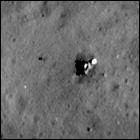 The Soviet Union launches the unmanned space probe Luna 23 toward the moon, intended to gather surface samples from the Mare Imbrium region for return to Earth. The sample collection hardware is unable to complete its task after landing, and ground controllers are only able to receive partial scientific data from the lander, whose batteries run out within three days of landing. It won’t be until 2012, when NASA’s Lunar Reconnaissance Orbiter photographs Luna 23’s landing site from orbit, that the truth will be learned: the lander tipped over on its side during a descent mishap, leaving it intact but unable to gather a soil sample.
The Soviet Union launches the unmanned space probe Luna 23 toward the moon, intended to gather surface samples from the Mare Imbrium region for return to Earth. The sample collection hardware is unable to complete its task after landing, and ground controllers are only able to receive partial scientific data from the lander, whose batteries run out within three days of landing. It won’t be until 2012, when NASA’s Lunar Reconnaissance Orbiter photographs Luna 23’s landing site from orbit, that the truth will be learned: the lander tipped over on its side during a descent mishap, leaving it intact but unable to gather a soil sample.
Luna 22
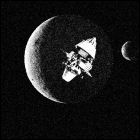 The Soviet Union launches the unmanned space probe Luna 22 toward the moon, the last of the moon-orbiting Luna missions (the remaining vehicles in the series will be attempted landings). Luna 22 remains operational in lunar orbit for 17 months.
The Soviet Union launches the unmanned space probe Luna 22 toward the moon, the last of the moon-orbiting Luna missions (the remaining vehicles in the series will be attempted landings). Luna 22 remains operational in lunar orbit for 17 months.
Luna 21 and Lunokhod 2
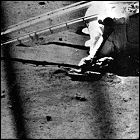 The Soviet Union launches unmanned space probe Luna 21 toward the moon, carrying the Lunokhod 2 robotic rover. Like Lunokhod 1, this rover is solar-powered and can operate independently of its lander, though ground controllers push this vehicle further. Five months into its mission, Lunokhod is driven into a crater from which it is unable to escape; the mission is declared over a month later. This mission is not intended to return lunar soil samples to Earth.
The Soviet Union launches unmanned space probe Luna 21 toward the moon, carrying the Lunokhod 2 robotic rover. Like Lunokhod 1, this rover is solar-powered and can operate independently of its lander, though ground controllers push this vehicle further. Five months into its mission, Lunokhod is driven into a crater from which it is unable to escape; the mission is declared over a month later. This mission is not intended to return lunar soil samples to Earth.
Luna 20
 The Soviet Union launches unmanned space probe Luna 20 toward the moon, another robotic lunar lander with the capability of gathering a lunar soil sample and returning it to Earth. Over 50 grams of lunar material, including rocky material from the mountainous region near Luna 20’s landing site, are returned to Earth in a shielded re-entry capsule. The lander continues to operate for three days after the sample container is launched back to Earth.
The Soviet Union launches unmanned space probe Luna 20 toward the moon, another robotic lunar lander with the capability of gathering a lunar soil sample and returning it to Earth. Over 50 grams of lunar material, including rocky material from the mountainous region near Luna 20’s landing site, are returned to Earth in a shielded re-entry capsule. The lander continues to operate for three days after the sample container is launched back to Earth.
Luna 19
 The Soviet Union launches unmanned space probe Luna 19 toward the moon, a return to orbital-only missions. Over the course of a year, Luna 19 conducts an extensive mapping campaign of the lunar surface, as well as measuring gravitational anomalies in lunar orbit.
The Soviet Union launches unmanned space probe Luna 19 toward the moon, a return to orbital-only missions. Over the course of a year, Luna 19 conducts an extensive mapping campaign of the lunar surface, as well as measuring gravitational anomalies in lunar orbit.
Luna 18
 The Soviet Union launches unmanned space probe Luna 18 toward the moon, intended to repeat Luna 16’s feat of gathering and returning a sample of lunar soil to Earth. After spending nearly a week in orbit, Luna 18 descends to the surface, but ground controllers have directed it toward a hazardous mountain region, and contact is lost at the moment the vehicle signals contact with the ground – very likely a sign of a crash landing. No further communication is received from Luna 18, nor is the sample container ever sent back to Earth.
The Soviet Union launches unmanned space probe Luna 18 toward the moon, intended to repeat Luna 16’s feat of gathering and returning a sample of lunar soil to Earth. After spending nearly a week in orbit, Luna 18 descends to the surface, but ground controllers have directed it toward a hazardous mountain region, and contact is lost at the moment the vehicle signals contact with the ground – very likely a sign of a crash landing. No further communication is received from Luna 18, nor is the sample container ever sent back to Earth.
Luna 17 and Lunokhod 1
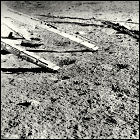 The Soviet Union launches unmanned space probe Luna 17 toward the moon, carrying with it the first automated moon rover, Lunokhod 1. Solar-powered and deployed to the surface via a pair of ramps, the wheeled rover operates for eleven months, more than double the expected operational life span. Unlike Luna 16, Luna 17 and Lunokhod perform their studies of the lunar surface without returning any soil samples to Earth.
The Soviet Union launches unmanned space probe Luna 17 toward the moon, carrying with it the first automated moon rover, Lunokhod 1. Solar-powered and deployed to the surface via a pair of ramps, the wheeled rover operates for eleven months, more than double the expected operational life span. Unlike Luna 16, Luna 17 and Lunokhod perform their studies of the lunar surface without returning any soil samples to Earth.
Luna 16
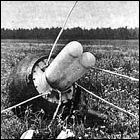 The Soviet Union launches unmanned space probe Luna 16 toward the moon, the first success in the Soviet space program’s ongoing attempt to mount a robotic sample return mission. The lander’s drill-equipped sample collection arm gathers a 35 millimeter, 100-gram core sample of lunar soil, which is then packed into a shielded return capsule for direct return to Earth (seen here after landing). Now claiming that they advocate robotic sample return missions without putting human lives at risk, the Soviets can at last claim a lunar first – the first robotic return to Earth of a soil sample from another body in the solar system.
The Soviet Union launches unmanned space probe Luna 16 toward the moon, the first success in the Soviet space program’s ongoing attempt to mount a robotic sample return mission. The lander’s drill-equipped sample collection arm gathers a 35 millimeter, 100-gram core sample of lunar soil, which is then packed into a shielded return capsule for direct return to Earth (seen here after landing). Now claiming that they advocate robotic sample return missions without putting human lives at risk, the Soviets can at last claim a lunar first – the first robotic return to Earth of a soil sample from another body in the solar system.
Luna 15
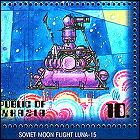 The Soviet Union launches unmanned space probe Luna 15 toward the moon, the Soviet space program’s last attempt to claim a victory in the race to the moon. Intended to land on the moon and gather a core sample of lunar soil which will then be rocketed back to Earth, hopefully ahead of the arrival of lunar soil samples from the concurrent American Apollo 11 moon landing attempt, Luna 15’s lander detaches and attempts its landing on July 20th…only to crash into the moon’s surface, losing all contact with Earth, while NASA astronauts Neil Armstrong and Buzz Aldrin prepare to depart with their soil samples intact. In a rare display of international cooperation, the Soviets shared basic orbital parameters of Luna 15’s flight with NASA to avoid any navigational hazards for Apollo 11.
The Soviet Union launches unmanned space probe Luna 15 toward the moon, the Soviet space program’s last attempt to claim a victory in the race to the moon. Intended to land on the moon and gather a core sample of lunar soil which will then be rocketed back to Earth, hopefully ahead of the arrival of lunar soil samples from the concurrent American Apollo 11 moon landing attempt, Luna 15’s lander detaches and attempts its landing on July 20th…only to crash into the moon’s surface, losing all contact with Earth, while NASA astronauts Neil Armstrong and Buzz Aldrin prepare to depart with their soil samples intact. In a rare display of international cooperation, the Soviets shared basic orbital parameters of Luna 15’s flight with NASA to avoid any navigational hazards for Apollo 11.
Luna 14
 The Soviet Union launches unmanned space probe Luna 14 toward the moon, where it takes up a lunar orbit and returns scientific data on cosmic rays and gravitational variances. This is the last orbital mission of the Luna series; future Luna vehicles will be landers or landers with rovers, some with sample return capability.
The Soviet Union launches unmanned space probe Luna 14 toward the moon, where it takes up a lunar orbit and returns scientific data on cosmic rays and gravitational variances. This is the last orbital mission of the Luna series; future Luna vehicles will be landers or landers with rovers, some with sample return capability.
Luna 13
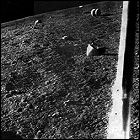 The Soviet Union launches unmanned space probe Luna 13 toward the moon, where it becomes the third space vehicle to successfully make a soft landing on the lunar surface. Larger than its Soviet predecessor, Luna 9, Luna 13 measures the temperature, radiation, and hardness of the moon’s surface, all useful information to have in advance of a manned landing. After operating on the lunar surface for four days, the Luna 13 lander’s batteries are exhausted and the mission is over.
The Soviet Union launches unmanned space probe Luna 13 toward the moon, where it becomes the third space vehicle to successfully make a soft landing on the lunar surface. Larger than its Soviet predecessor, Luna 9, Luna 13 measures the temperature, radiation, and hardness of the moon’s surface, all useful information to have in advance of a manned landing. After operating on the lunar surface for four days, the Luna 13 lander’s batteries are exhausted and the mission is over.
Luna 12
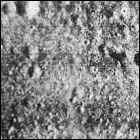 The Soviet Union launches unmanned space probe Luna 12 toward the moon, a near-identical twin of the earlier Luna 11 spacecraft. Luna 12 returns images and observations from lunar orbit for three months until its batteries are exhausted.
The Soviet Union launches unmanned space probe Luna 12 toward the moon, a near-identical twin of the earlier Luna 11 spacecraft. Luna 12 returns images and observations from lunar orbit for three months until its batteries are exhausted.
Luna 11
 The Soviet Union launches unmanned space probe Luna 11 toward the moon, the first of a new, smaller generation of Luna probes designed to survey the moon from orbit. Unlike its predecessor, Luna 11 is equipped with cameras, and like NASA’s Lunar Orbiter, Luna 11 is tasked with mapping the moon in advance of a presumed attempt to land cosmonauts there. However, an attitude control problem points Luna 11’s cameras away from the moon, unable to transmit useful imagery back to Earth. Luna 11 remains functional in orbit of the moon for six weeks.
The Soviet Union launches unmanned space probe Luna 11 toward the moon, the first of a new, smaller generation of Luna probes designed to survey the moon from orbit. Unlike its predecessor, Luna 11 is equipped with cameras, and like NASA’s Lunar Orbiter, Luna 11 is tasked with mapping the moon in advance of a presumed attempt to land cosmonauts there. However, an attitude control problem points Luna 11’s cameras away from the moon, unable to transmit useful imagery back to Earth. Luna 11 remains functional in orbit of the moon for six weeks.
Luna 10: first to orbit the moon
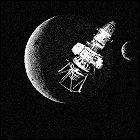 The Soviet Union launches unmanned space probe Luna 10 toward the moon, where it becomes the moon’s first artificial satellite. Luna 10 remains functional for two months, during which a pre-recorded signal from it becomes one of the highlights of the 23rd Congress of the Soviet Communist Party. Luna 10 does not take photos of the moon from orbit, but does find varying concentrations of mass within the lunar surface. This is the last of the original “large” Luna probes, with later orbiters taking on a more compact form, and later large Luna probes containing landers and sample return rockets.
The Soviet Union launches unmanned space probe Luna 10 toward the moon, where it becomes the moon’s first artificial satellite. Luna 10 remains functional for two months, during which a pre-recorded signal from it becomes one of the highlights of the 23rd Congress of the Soviet Communist Party. Luna 10 does not take photos of the moon from orbit, but does find varying concentrations of mass within the lunar surface. This is the last of the original “large” Luna probes, with later orbiters taking on a more compact form, and later large Luna probes containing landers and sample return rockets.
Luna 9: first soft landing on another world
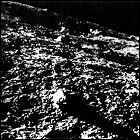 The Soviet Union lands a palpable hit in the space race, claiming the first intact soft-landing of a man-made probe on another body in the solar system. Luna 9, a 200-pound sphere whose weighted base rolls to the correct orientation before opening petals exposing its camera and other instruments, proves that the lunar surface is dense enough to hold up heavy objects (previous scientific speculation has presented the possibility of a heavy lander sinking into a quicksand-like lunar surface).
The Soviet Union lands a palpable hit in the space race, claiming the first intact soft-landing of a man-made probe on another body in the solar system. Luna 9, a 200-pound sphere whose weighted base rolls to the correct orientation before opening petals exposing its camera and other instruments, proves that the lunar surface is dense enough to hold up heavy objects (previous scientific speculation has presented the possibility of a heavy lander sinking into a quicksand-like lunar surface).
Luna 8
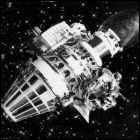 Soviet engineers and space scientists come achingly close to succeeding in landing a robotic lunar lander on the moon’s surface. Luna 8, the latest in a long line of problem-plagued would-be moon explorers, lifts off. A new, improved version of the nearly 3,500-pound spacecraft, Luna 8 manages to last longer than the previous three attempts at Luna landers, but loses control mere minutes from a safe touchdown, crashing into the moon instead. The Soviet Union will finally achieve a safe landing on the moon just two months later with Luna 9.
Soviet engineers and space scientists come achingly close to succeeding in landing a robotic lunar lander on the moon’s surface. Luna 8, the latest in a long line of problem-plagued would-be moon explorers, lifts off. A new, improved version of the nearly 3,500-pound spacecraft, Luna 8 manages to last longer than the previous three attempts at Luna landers, but loses control mere minutes from a safe touchdown, crashing into the moon instead. The Soviet Union will finally achieve a safe landing on the moon just two months later with Luna 9.
Luna 7
 The Soviet Union launches unmanned space probe Luna 7 to land on the moon, having spent months analyzing the failed flights of Luna 5 and 6 and implementing safeguards against those failures. Unforuntately, however, a different technical problem strikes Luna 7 just hours away from the moon’s surface, preventing it from firing its braking rockets. Luna 7 does reach the moon, but not at a survivable speed, crashing into the surface very close to its intended landing site.
The Soviet Union launches unmanned space probe Luna 7 to land on the moon, having spent months analyzing the failed flights of Luna 5 and 6 and implementing safeguards against those failures. Unforuntately, however, a different technical problem strikes Luna 7 just hours away from the moon’s surface, preventing it from firing its braking rockets. Luna 7 does reach the moon, but not at a survivable speed, crashing into the surface very close to its intended landing site.
Luna 6
 It’s not easy to reach the moon. Just a month after the failed flight of Luna 5, the Soviet Union launches the near-identical unmanned spacecraft Luna 6 to the moon. A pre-programmed mid-course correction engine burn, meant to help Luna 6 coast toward a soft landing on the lunar surface, instead overcorrects. The engine fails to acknowledge a command to stop firing, pushing Luna 6 so far off course that it misses the moon by almost 100,000 miles, dumping the vehicle in an orbit around the sun.
It’s not easy to reach the moon. Just a month after the failed flight of Luna 5, the Soviet Union launches the near-identical unmanned spacecraft Luna 6 to the moon. A pre-programmed mid-course correction engine burn, meant to help Luna 6 coast toward a soft landing on the lunar surface, instead overcorrects. The engine fails to acknowledge a command to stop firing, pushing Luna 6 so far off course that it misses the moon by almost 100,000 miles, dumping the vehicle in an orbit around the sun.
Luna 5: negative, it just impacted on the surface
 Following two years of aborted or otherwise unsuccessful attempts to launch another robotic lunar lander toward the moon, the Soviet Union sends Luna 5 on its way. Intended to be an automated soft-landing mission, Luna 5 encounters major technical problems as it coasts from Earth to the moon. It does eventually reach the moon, but does so out of control and unable to brake for a survivable landing; the plume of material created by the impact of the 3,000-pound Luna 5 is large enough to be spotted from Earth-based telescopes for several minutes.
Following two years of aborted or otherwise unsuccessful attempts to launch another robotic lunar lander toward the moon, the Soviet Union sends Luna 5 on its way. Intended to be an automated soft-landing mission, Luna 5 encounters major technical problems as it coasts from Earth to the moon. It does eventually reach the moon, but does so out of control and unable to brake for a survivable landing; the plume of material created by the impact of the 3,000-pound Luna 5 is large enough to be spotted from Earth-based telescopes for several minutes.
Luna 4 loses the landing
 An unmanned Soviet lunar lander, Luna 4, is launched from the USSR’s Baikonur Cosmodrome. Unlike Luna 2, which intentionally crashed into the moon with no attempt to slow its approach, Luna 4 is the first atempt at a vehicle intended to survive its descent to the lunar surface and make observations from the ground. A failed course correction engine burn leaves the 3,000-pound vehicle in a wide, looping orbit around the Earth, unable to reach the moon at all. The Soviet Union, after several more attempts, will eventually achieve the first unmanned soft landing on the surface of the moon three years later.
An unmanned Soviet lunar lander, Luna 4, is launched from the USSR’s Baikonur Cosmodrome. Unlike Luna 2, which intentionally crashed into the moon with no attempt to slow its approach, Luna 4 is the first atempt at a vehicle intended to survive its descent to the lunar surface and make observations from the ground. A failed course correction engine burn leaves the 3,000-pound vehicle in a wide, looping orbit around the Earth, unable to reach the moon at all. The Soviet Union, after several more attempts, will eventually achieve the first unmanned soft landing on the surface of the moon three years later.
Luna 3: first look at the moon’s far side
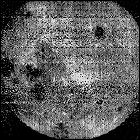 The Soviet Union’s Luna 3 unmanned probe is launched toward the moon, where it transmits the first images of the moon’s far side back to Earth – a sight that has never been seen by humans before since the moon’s near side is tidally locked toward Earth. Luna 3’s closest pass to moon brings it to within 4,000 miles of the lunar surface, and despite low signal strength and data errors during transmission, nearly 20 images of the moon’s far side are sent back to Soviet scientists via a process not unlike sending a fax.
The Soviet Union’s Luna 3 unmanned probe is launched toward the moon, where it transmits the first images of the moon’s far side back to Earth – a sight that has never been seen by humans before since the moon’s near side is tidally locked toward Earth. Luna 3’s closest pass to moon brings it to within 4,000 miles of the lunar surface, and despite low signal strength and data errors during transmission, nearly 20 images of the moon’s far side are sent back to Soviet scientists via a process not unlike sending a fax.
Luna 2
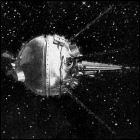 Soviet space scientists and engineers score another first, launching Luna 2 toward the moon with the intention of a successful crash landing, with the unmanned vehicle sending back data until it is destroyed in the impact. With no engines of its own, Luna 2 is at the mercy of whatever trajectory is imparted to it by its booster rocket, ultimately taking a day and a half to slam into the lunar dust near the flat plain known as Mare Imbrium. A small metal sphere aboard Luna 2 bears the year and country of origin; a replica of that sphere is later presented to American President Eisenhower by Soviet Premier Nikita Khrushchev.
Soviet space scientists and engineers score another first, launching Luna 2 toward the moon with the intention of a successful crash landing, with the unmanned vehicle sending back data until it is destroyed in the impact. With no engines of its own, Luna 2 is at the mercy of whatever trajectory is imparted to it by its booster rocket, ultimately taking a day and a half to slam into the lunar dust near the flat plain known as Mare Imbrium. A small metal sphere aboard Luna 2 bears the year and country of origin; a replica of that sphere is later presented to American President Eisenhower by Soviet Premier Nikita Khrushchev.
Luna 1
 With the international race for space technology supremacy heats up, the Soviet Union scores a first: the unmanned Luna 1 is the first human-made object to completely escape Earth’s gravity. Luna 1 is meant to impact the mon, but the nearly-800-pound space probe barely comes within 4,000 miles of the lunar surface. Luna 1 later becomes the first artificial object to orbit the sun, after running out of power at a point in deep space between the orbits of Earth and Mars. The state-run Soviet press agency gives Luna 1 a new name, Mechta, and tries to declare the wayward moonship a “new planet.”
With the international race for space technology supremacy heats up, the Soviet Union scores a first: the unmanned Luna 1 is the first human-made object to completely escape Earth’s gravity. Luna 1 is meant to impact the mon, but the nearly-800-pound space probe barely comes within 4,000 miles of the lunar surface. Luna 1 later becomes the first artificial object to orbit the sun, after running out of power at a point in deep space between the orbits of Earth and Mars. The state-run Soviet press agency gives Luna 1 a new name, Mechta, and tries to declare the wayward moonship a “new planet.”
Luna E-1 #1
 Less than a year after launching the first Earth-orbiting artificial satellite, the Soviet Union makes its first attempt to launch an unmanned space vehicle toward the moon. The flight of Luna E-1 #1 lasts a mere 92 seconds before its launch vehicle explodes in mid-air. Further attempts will be made by Sergei Korolev’s team of engineers to launch a lunar spacecraft, giving the escalating international space race a new (if somewhat obvious) target for both unmanned and crewed space flights over the next decade.
Less than a year after launching the first Earth-orbiting artificial satellite, the Soviet Union makes its first attempt to launch an unmanned space vehicle toward the moon. The flight of Luna E-1 #1 lasts a mere 92 seconds before its launch vehicle explodes in mid-air. Further attempts will be made by Sergei Korolev’s team of engineers to launch a lunar spacecraft, giving the escalating international space race a new (if somewhat obvious) target for both unmanned and crewed space flights over the next decade.